-
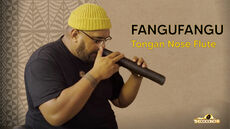
The Tongan Nose Flute (Fangufangu) with Saia Tu'itahi
Musician Saia Tu’itahi takes us through the art of the Tongan Nose flute. An ancient Pasifika instrument that was historically used in Tonga by guards and attenders to awaken their chiefs The use of the Tongan Nose Flute has been seen less and less over time but the art is still very much alive in the home of Saia Tu’itahi. Saia talks to us about the history of Fangufangu, and touches on what has inspired him to revitalise the dying artform. His EP ‘Fangufangu ‘Inasi’ can be found on Spotify where the maestro uses a mixture of the beautiful sounds of Fangufangu, and modern beats in the 5 song masterpiece.
-
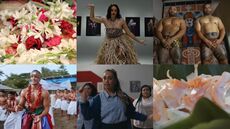
CELEBRATING 10 YEARS OF THE COCONETTV
Celebrating 10 years of the Coconet TV!! We are so happy to have been able to bring you the stories that have won the hearts of our Moana people around the world, which we have had the privilege and joy of making over the last decade. From the smash hit films 'Inky Pinky Ponky' to 'Teine Sa' and a raft of award winning documentaries, and hundreds of stories from our communities - the Coconet has become the home for our Pasifika aiga near and far. #ForThePeople #ByThePeople is the mantra of our collective of Coco creatives and the all Pasifika teams and crews that we have developed over the years. ' We are so proud to have brought through hundreds of Pasifika production people, crew and talent in this time, and to have worked with our communities across the Moana Nui A Kiwa. Ia Maniua - #KeepItCoco and experience our collective joy and alofa as Pasifika people in this special trailer: https://www.thecoconet.tv for more from the Coconet aiga xx
-
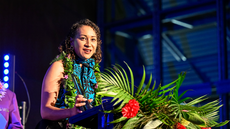
Artists Recognised and Celebrated at CNZ Arts Pasifika Awards 2023
The 2023 Creative New Zealand Arts Pasifika Awards celebrated their champions at Te Papa Museum in Wellington; in an occasion of pride for female Pacific artists who triumphed in most categories, including two remarkable winners in the Senior Pacific Artist category in Cook Islands textile artist Ani O'Neill and Samoa/Māori sculptor Lonnie Hutchinson. These awards stand as a unique national recognition of Pasifika artists from various creative realms, making it a vibrant and globally celebrated annual affair that highlights Pacific artistic brilliance in both Aotearoa and worldwide.
-
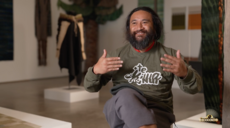
14 Malone Road | Creative NZ Arts Profile
Welcome back to Measina Festival 2023! Join us as we sit down with award-winning choreographer and dancer Tupua Tigafua, along with the cast of his latest work '14 Malone Road,' which takes us on a personal journey of nostalgia for a family home through song, dance, and theatre.
-
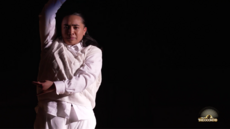
Measina Festival 2023 | Creative NZ Arts Profile
We're in Porirua for the annual Measina Festival! Join us as we dive into the vibrant world of dance and theatre, and chat with this year's emerging Pasifika artists.
-
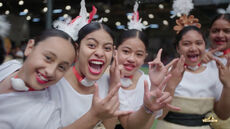
Otago Polyfest 2023 | Creative NZ Arts Profile
South Island represent! The Polys of Otago came through with a Polyfest extravaganza that saw hundreds of local Pasifika storming the stages with these epic performances.
-
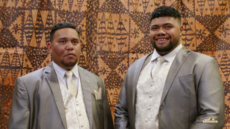
Koe Pō Hiva Tu'ufonua FakaTonga II: A Night Of Tongan Classical Music II theatre concert.
Enjoy highlights of the second season of: "Koe Pō Hiva Tu'uFonua FakaTonga: A night of Tongan Classical Music" theatre concert. A spectacular night of Tongan classical music featuring the best of old and new Tongan songs performed by Feohi'anga Ālonga 'Ia Kalaisi kava and vocal-instrumental collective It was an evening extravaganza, exhibiting a selection of refined works of music and sung poetry, by renowned Tongan artists, such as Queen Sālote Mafile'o Pilolevu Tupou III, Prince Fatafehi Tu'ipelehake, Malukava, Fineasi, and Peni Tutu'ila. This concert which was held on the 23rd and 24th of June, took the beauty and utility of Tongan music in kava collectives to a whole new level - by moving from garages, community and church halls to the theatre space.
-
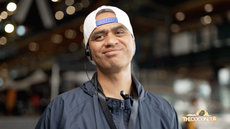
Southside Represent | Keepin It Fresh
SouthSide Represent event, an amazing opportunity to showcase the unique people and culture of South Auckland. It's inspiring to see so many talented individuals and businesses come together to make this happen. Keepin It Fresh brings you all the freshness happening in our Moana communities, from Siva Afi Festivals to Fashion Shows.
-
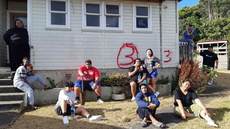
No. 3 Roskill Theatre comes home to Puketāpapa
After being in limbo for the past couple of years, No.3 Roskill Theatre celebrate the opening of their new permanent home at 1234 Dominion Road. What is especially exciting is that this is the first ever dedicated theatre space in Puketāpapa / Mt. Roskill, and finally provides a dedicated base for the company to create work for their neighbourhood. No. 3 Roskill Theatre was born when a group of local creatives had the idea of using the location of Toa Fraser's 2005 film “No.2” as a theatre space. This ignited a collaboration between Mt Roskill residents – and friends – John Leach of events company JLP Presents, with Tanya Muagututi’a and Pos Mavaega of Pacific Underground. Despite the house in the film being depicted as No. 2, it’s actually No. 3 Roseman Avenue. The company decided to take that as their name to keep the connection to the movie, the house, and Puketāpapa. It’s literally where they all come from. No. 3’s debut in the 2021 Auckland Arts Festival broke new placemaking ground. Their show ‘Love to say Goodbye’, held in the backyard of the old state house at 3 Roseman Ave, was a sensation and set the scene for them to provide artistic leadership within their region. Roskill South is the most diverse neighbourhood in Auckland. It's a suburb the size of Dunedin, with 151 nations – but no artistic infrastructure. The No. 3 Trust saw the need to secure a building for the company to work out of to increase the amount of cultural capital within the community. No.3 company continues with their current show ‘Welcome Home’, which tells a musical and comedic story of the ‘Real Housewives of Roskill’ as they dream about being the ultimate hosts for their new neighbours. Amidst redevelopment, rehousing, and roadworks, they endeavour to maintain the Spirit of the Community. 'Welcome Home' will be developed in No. 3's new base at 1234 Dominion Road, and performed at May Road School in November. Watch this space for more news about the show closer to the time! Public Interest Journalism funded by NZ On Air
-
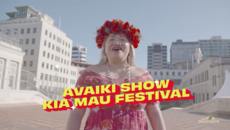
Avaiki Show - Kia Mau Festival
Avaiki! Ardijah jam put their greatest hits on the ukulele and Brother Luv brings ‘Roimata’ to life in this special celebration of Kuki Airani string bands as part of the Kia Mau festival in Wellington.
-
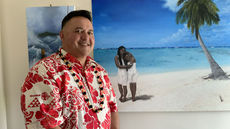
ARTIST PROFILE - THE OYSTER presents CLINTON HEWETT
Based in Manurewa, Clinton Hewett is a Cook Islands Artist and Woodcarver. He works in oil, watercolor and acrylic, and also uses oil pastels and block printing to create depth within his compositions. Clinton Hewett has been working as a woodcarver, artist and storyteller (heritage knowledge bearer) professionally since 1991. His career spans 32 years thus far, beginning in Aitutaki, Cook Islands. Hewetts’ work explores narratives drawn from the cultural heritage of his birthplace and ancestral lands of Aitutaki and Rarotonga, and the experiences of its transformation in the Cook Island diaspora of Aotearoa, New Zealand. {{33112}} Who is one of your biggest influences? Darcy Nicholas and Andy Leleisi’uao and Benjamin Work. {{33114}} What do you love most about being an artist? Darcy Nicholas said “Creating art is my freedom” and it has formed the biggest part of my world for as long as I can remember as a child. {{33120}} What recent exhibition most excited you and why? Marcus Hipa, it was so relatable for me to work from experiences from your homeland and the transcending that takes place when you emigrate away from your world to a new place. {{33116}} How do you think your heritage informs your art practice? It will always be central to my practice but the key for me was to learn and respect our histories while not only looking at our past as it can absorb us and envelop our visual conversations as we develop. {{33118}} What is the main message you want to convey through your work in general? Share my knowledge and interpretations of the two worlds I live in. One, of the heritage lessons I learned in Aitutaki and two, that of the experiences of the existence of our culture in the diaspora of Aotearoa.
-
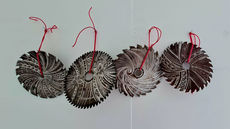
ARTIST PROFILE - THE OYSTER presents TROY JACKSON
Troy Jackson (Niue, Hakupu Atua, Avasele, Ngāpuhi, African American) is a multidisciplinary artist who was born and bred in Ōtara, South Auckland. His art traverses various mediums including glass etching, calligraphy, wood carving, painting and more recently digital art. {{33138}} Early exposure to traditional Māori art forms and study at Ngāti Ōtara and Whai Ora marae has had a significant influence on his practice. Recently, Jackson has completed long-term community studio art residencies with Crosspower Ministries and Massey Homestead working with local youth art programmes. {{33087}} Information about the exhibition at The Ōyster Troy's art installation is a striking reflection on the recent Cyclone that caused havoc across Aotearoa. Circular saw blades, engraved with Pacific motifs, are suspended above miniature vaka, creating an industrial aesthetic that is both powerful and unsettling. However, there is more to this installation than meets the eye. Troy's inspiration for the piece came from a vivid dream he had months before the floods. Incorporating found objects and debris strewn in his yard from the aftermath of the Cyclone, he adds a deeper layer of meaning to the installation. For Troy, the installation is a powerful expression of resilience, creativity, and the transformative power of art. By exploring the intersections between culture, technology, and the natural world, he draws on his own cultural and spiritual traditions to create a work that speaks to the resilience of his community in the face of adversity. Overall, Troys art installation is a testament to the ways in which art can inspire and transform, offering hope and renewal even in the most challenging circumstances. {{33093}} - Who is one of your biggest influences? My parents have a creative background, with my mother being skilled in sewing and weaving and my father drawing cowboys as a child. They both have a fondness for Westerns. My mother, who attended art school for a little while, has a talent for art. I remember her drawing women's faces and fashion illustration. She continues to be creative and expresses herself through crochet, drawing, and painting. She even stitches her designs onto pillows, inspired by the styles of the 1930s. {{33089}} What do you love most about being an artist? I love creating art out of anything and expressing myself in different ways. Art is a huge part of my life, and it's always with me, whether I'm out for a walk or simply relaxing. Whenever I find something dull or uninspiring, I can always find a way to breathe new life into it through my art. My cultural heritage and identity are also reflected in my creations. It's amazing how a single thought can turn into a finished masterpiece, from a rough sketch to a final product. My daughter is my biggest critic, and her feedback always helps me improve. I'm grateful for her support, and I'm proud to share my love of art with my children. Even though they didn't inherit my artistic passion, they support me. {{33091}} What recent exhibition most excited you and why? One of my proudest moments as an artist was when the executives at Telstra asked me to design something for the doors of their building. This was not a recent achievement, but it remains one of my memorable and biggest challenges to date. I designed and engraved by hand all 18 panels for the doors of the Telstra Events Centre (now renamed Due Drop Events Centre) when it opened in Manukau in 2005. This was a massive undertaking that took a couple of weeks to complete. It was an incredible opportunity for me to showcase my skills in glass engraving and to have my work displayed in such a prominent location. I was personally invited by CEO Richard Jefferies (at the time) and I am proud of the final outcome. It was a defining moment in my career and gave me the confidence to pursue more challenging projects. {{33097}} How do you think your heritage informs your art practice? As a person of mixed heritage, it can be challenging to represent designs or motifs from one specific culture, but it's still an integral part of my identity. My work is multicultural and contemporary, and I don't spend too much time planning or designing it. I usually have a clear idea of what I want to create and let the creative process guide me. My designs are a fusion of different cultures, and I don't always explicitly mention the cultural influences unless someone asks. Those who see my art can often see the connections to different cultures, with hints of this and that. Ultimately, my art reflects my diverse background and is a celebration of cultural diversity. {{33095}} What is the main message you want to convey through your work in general? TJ: I create art as a way of expressing myself and showcasing the fusion of different cultures that make up my identity. I want people to see who I am, not just my Niuean heritage. I try to turn negative experiences into positive ones and show that I'm in control of my life. For example, I use the aftermath of a cyclone to capture what it did to everyone, and I create art that draws comparisons between the cyclone and saw blades. I also incorporate natural elements, such as walking sticks, into my work. My faith and Christian background are also reflected in my art. For instance, I create vaka (canoe) designs that represent the Father, Son, and Holy Spirit. When I create, I try to capture the stillness that Jesus speaks of, even amidst chaos and turmoil. Overall, my art is a reflection of who I am, and I hope that it inspires others to embrace their own identities and celebrate cultural diversity. {{33099}} - Jackson is largely self-taught and was trained in calligraphy, signwriting, and glass etching at Whai Ora marae; a Catholic marae in Ōtara, under the tutelage of artist/tutor Sister Monica Swindell. He worked closely with other local artists in training and eventually became the tutor for the bone carving module based at Whai Ora marae. Through his work within the community, and artist residencies Jackson has been able to share his knowledge and skills with the next generation of artists, helping to foster a love for the arts in his community. He continues to create small commissioned pieces for the local community.
-
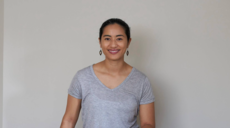
ARTIST PROFILE - ELISABETH KUMARAN
Emerging artist Elisabeth Kumaran is a New Zealand-born, Samoan/Chinese visual artist based in South Auckland. She hails from the villages of Vailele, Ulutogia, and Vailoa-Palauli. The Samoan language, Samoan traditions, and the artists heritage, are core components expressed through her work. Kumaran’s practice spans mediums such as drawing, illustration, hand-drawn stop motion video animation and hand cut paper illustrations. {{32622}} Explanation on work exhibiting at The Ōyster, Ōtara Kumarans’ exhibition at The Ōyster in April was titled ‘Watch me #WIP’ (Work In Progress). #WIP is a hashtag used by many creatives across social to keep viewers abreast of their creative progress, it helps to build a sense of excitement around their work and offers a behind the scenes glimpse into the artists’ journey. Kumarans’ earliest memories are of growing up in Ōtara and discovering a love for drawing. Watch me #WIP was an installation of her studio, a small, private space, filled with music, pot plants, inspirational objects and drawings. {{32620}} Q&A with Elisabeth Kumaran Who is one of your biggest influences? My late parents are my number one influences. They always supported and encouraged me to pursue my creativity. A lot of my work incorporates the Samoan culture and my upbringing and I owe this to how we were brought up at home. {{32624}} What do you love most about being an artist? Being able to express ideas visually, and continuing to explore various mediums and processes. I love that my art can teach others about the fa’asamoa (Samoan culture). {{32627}} What recent exhibition most excited you and why? Moana Artists at Scott Lawrie Gallery, 2022. It was an honour to show alongside some talented Pacific artists. It was exciting to invite family and friends along and they were inspired and amazed at the variety and calibre of Pacific artists in the show. {{32630}} How do you think your heritage informs your art practice? My Samoan heritage and upbringing are the foundations of my art practice. I like to incorporate the Samoan language and culture in my art and stop-motion animations. It helps me to cherish and nurture my fa’asamoa. {{32632}} What is the main message you want to convey through your work in general? A majority of my art practice explores themes around the fa’asamoa using different materials such as: stop motion video animations, hand paper-cut illustrations and installation work. {{32635}}
-
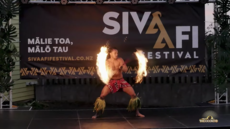
Siva Afi Festival 2023
Now in its fourth year, this pioneering event brings the talents and skills of young men & women to the fore, through a centuries-old traditional art form from Samoa: siva afi/fire knife dancing. Held at the Mangere Arts Centre, the event featured local and international competitors alongside special guest performers and internationally renowned siva afi experts plus the NZ Schools siva afi festival competition.
-
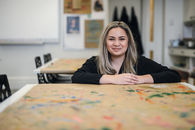
ARTIST PROFILE - THE OYSTER presents JASMINE TE HIRA
Jasmine Te Hira (Cook Islands/Maori & English heritage) is an artist, arts educator and community partnership coordinator based in Tāmaki, Aotearoa. Her current Masters project is based at Unitec Te Whare Wānanga o Wairaka, where she graduated as Senior Scholar from her undergraduate degree in Design and Visual Arts (2016). Jasmine has forged a practice that articulates concepts relating to time, memory and perception through the boundaries of object, video and constructed space, and exhibited most recently at Objectspace and Auckland Art Gallery Toi o Tāmaki. {{32216}} Explanation on work exhibiting at The Ōyster, Ōtara My exhibition at The Ōyster investigates how our surroundings can impact the visual language of our lives. The name for this exhibition is ‘The Architecture of Home’ which is a nod to my south Auckland upbringing while connecting simultaneously to the other homes I have, based in my whakapapa. {{32213}} Recently, the artworks I have been creating consider taonga as ‘shadow sites’ – objects that have the capability to be embedded with hidden or private histories. Each of the works included in this exhibition explores the power of personal adornment and the potential of contemporary taonga to support the retelling of histories, the revoicing of language and memory. {{32210}} Q&A with Jasmine Te Hira Who is one of your biggest influences? My whānau. I come from an incredibly creative whānau on both sides. They have shaped me to see the world the way that I do and I am very thankful for the creative legacy they have provided for us, the next generation {{32218}} What do you love most about being an artist? Making art for me is a way of processing and understanding the world around me. I love encountering and being challenged by knowledge, looking at things from different perspectives and making sense of its interconnectedness. For me, problem solving is at the core of creativity – this is one of the best aspects, having a skill that can translate into finding solutions across a range of life experiences. {{32220}} What recent exhibition most excited you and why? Encountering art can come in many different forms, for me, I often find this in music. The set design for Kendrick Lamar’s most recent Tāmaki tour was awesome to experience. A series of large-scale shadow projections played from ceiling to floor, almost dominating Kendrick’s physical presence on stage. I really enjoy seeing how ‘atmosphere’ can be created by visual and sound elements for art and in exhibitions. {{32223}} How do you think your heritage informs your art practice? My practice is based in whakapapa – the continual learning, understanding and articulation of whakapapa connections. The inheritance of our heritage gives us, as creative practitioners, the ability to navigate past, present and futures that aren’t necessarily time dependent. This is the reason I love researching ‘taonga’. Taonga have an incredible ability to unfold time, complex blends of storytelling over generations that are fluid representations of whakapapa. A taonga that was worn by a great-grandmother can be worn in the present by a great-granddaughter, bringing forward the presence of a maternal line, one which is living in the present world of the next generation. All these experiences of those generations are witnessed by that taonga – holding and embodied knowledge for us to navigate our futures together. {{32227}} What is the main message you want to convey through your work in general? The embedding of our experiences, stories in taonga, the process of creating taonga and handing these taonga on within a whānau, a whakapapa. {{32229}}
-
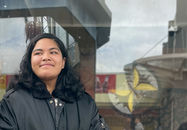
ARTIST PROFILE - THE OYSTER presents SAMARA ALEFAIO
Emerging artist Samara Alefaio (born 2003) started taking her practice seriously in Year 10, and has since furthered her studies to include printmaking (and etching). The artist has transposed her love for greek mythology and it’s statues and scupltures into etched icons, the likes of Percy Jackson and Zeus. Samara also works in acrylic, the fast drying paint allows to express herself quickly and affirmativley. Her painted subjects are usually Samoan weapons and tatau patterns from the Malu. {{31995}} For the installation at The Oyster, the artist recreated an interior setting, to speak to the Pacific Island community of Ōtara. The work includes a contemporary tapa banner, inspired by the artist’s uncle, the late Henry Wilson (1968-2001), whose work wraps The Ōysters outer shell and additional canvases to build out the homely feel. It was Samara’s first solo exhibition outside of school. {{31997}} The Oyster spoke to Samara about her art below ... - Who is one of your biggest influences? My uncle Henry Wilson. {{31999}} What do you love most about being an artist? Being able to express yourself. {{32001}} What recent exhibition most excited you and why? I have grown up surrounded by my Uncle Henrys artworks. It’s in my mums house, all his siblings have his art. {{32003}} How do you think your heritage informs your art practice? Heavily. Mostly my work is based on my own culture. In a way it’s about me learning about it. I come across new patterns. All the patterns have a story. {{32005}} What is the main message you want to convey through your work in general? It’s never too late to learn about your own culture. {{32007}}
-
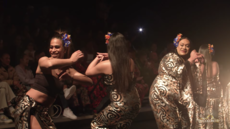
F.I.N.E Festival 2022 - Opening fiafia night highlights
Enjoy highlights from the F.I.N.E Festivals opening fiafia night at the Mangere Arts Centre showcasing Pasifika LGBTQI+, MVPFAFF+ performing artists. The festival itself ran over 3 days and was run by F’INE Pasifika Aotearoa Trust celebrating Pasifika rainbow and queer communities. F.I.N.E festival featured a series of workshops, facilitating a space to exchange knowledge with the wider community, while also giving artists an opportunity to creatively tell their stories.
-
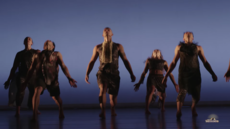
Moana Arts Profiles: What does it take to be a Black Grace Dancer - Leki Jackson Bourke and Aisea Latu
Young performing artists Aisea Latu and Leki Jackson-Bourke took up the huge challenge of joining the renowned 'Black Grace' dance troupe for their 'O Le Olaga' show, which toured the U.S and Aotearoa to mass acclaim. We profile the work of these young artists in the high impact dance show, which pushed them to new limits of endurance and expanded their performance skills to new heights. Aisea Latu is a young Tongan creative who sings, acts and dances and Leki Jackson Bourke is a Niuean multi disciplinary artist who works across cultural performance, film and theatre. In this profile piece we explore the journey they went on in hitting the stage with one of the world's most famous indigenous dance groups and their demanding physical routines. #DigitalMoanaArts
-
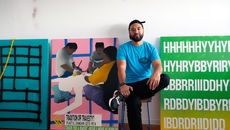
ARTIST PROFILE - THE OYSTER presents GARY SILIPA
Gary is a NZ-born Samoan artist with a varied art practice that includes art education, production, curation, and facilitation. Since 2010 Gary has focused on developing his artwork outside of the letter-based forms of graffiti, which he had been heavily involved in early in his career (1998). This transition sees Silipa producing work that shifts between the streets and indoor settings. Gary’s artwork continues to explore his unique, yet shared identity as a first-generation New Zealander from the Pacific Islands growing up in a modern, urban environment. Outside of making his own art Gary helps to deliver Auckland’s longest running outdoor mural project on behalf of TGTB Charitable Trust, Bradley Lane Project, and leads an artist-run community arts gallery called The Good The Bad Gallery in Glen Innes. {{31786}} The Oyster spoke to Gary about his time exhibiting in Otara below ... This is my second time exhibiting in the Otara location and my exhibition focused on my pride in being Samoan. My parents moved to NZ from Samoa in the early 80’s and I was born in Auckland not long after. My cultural dentity is something I struggled with for a long time. In NZ I was considered a Samoan even though my knowledge of Samoan language and culture is not that strong, but in Samoa I was called a ‘palagi’ since I was from NZ – a reference Samoans use for Europeans. I’ve been pretty settled for a while now thinking I fit somewhere in between yet separate from both. The recent success of the Samoan rugby league team and the parades and pride it showcased (especially in Ōtara) stirred something in me that reminded me that being Samoan is a big part of who I am and I should acknowledge and be proud of that. The exhibition in a way is a thank you to Ōtara for the reminder. {{31788}} - Who is one of your biggest influences? Keith Haring is one of my favourite artists. I like his use of symbols and how simple some of his artwork is drawn yet convey a much deeper meaning if you scratch the surface. You can enjoy it on lots of different levels. {{31790}} What do you love most about being an artist? Making art – the process and final outcome. Usually starts with a rough idea which develops as you work on it with surprising and unexpected results. There’s normally challenges and obstacles faced to move forward or steer you in different directions which keeps it interesting. I really enjoy when the final outcome includes aspects that weren’t anticipated at the beginning or if it was technically challenging and I managed to pull it off. {{31792}} What recent exhibition most excited you and why? I was really looking forward to checking out an exhibition in Melbourne in 2020 with Keith Haring and Jean-Michel Basquiat at the National Gallery of Victoria. Two of my favourite artists. Everything was booked then we went into lockdown a week before leaving. {{31794}} How do you think your heritage informs your art practice? Samoan culture has a strong connection to patterns and symbols that help to identify it. These traditional patterns were created at a particular time and place with references to the surrounding environment on the island. I use this same idea to help me understand what my cultural identity is. But since I was born in an urban environment I create patterns and symbols from my surroundings and what I grew up with experiencing in NZ. {{31796}} What is the main message you want to convey through your work in general? Life. Identity, beliefs and interests from my personal perspective. The good and the bad. Universal stuff I think lots of people can relate to. {{31798}}
-
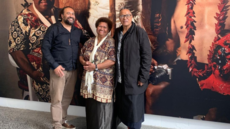
The Ulumate Project: Na Tolu - Joana Monolagi, Ole Maiava & Daren Kamali
The Ulumate Project: Na Tolu is an exhibition showing at Objectspace until the 26th of Feb 2023 by Joana Monolagi, Ole Maiava & Daren Kamali. Ulumate was traditionally observed during a time of mourning, when the drau-ni-ulu (hair) was cut and made into a wig, then worn until the hair beneath grew back. In pre-Christian Fiji, ulu cavu (hair wigs) were also worn in warfare. Post-colonisation, Qita (selected men) wore ulu cavu as they stood guard over the village plantation. Together with photographs, masks and masi, this exhibition features the first ulu cavu made in more than 200 years, woven by Joana Monolagi with hair collected from Daren Kamali. {{31508}} We talked to Daren who earlier this year won the Creative New Zealand, Pacific Heritage Arts Award about the exhibition below - What is an ulumate and what is its significance to Fiji culture? Ulumate Project, or the term Ulu mate refers to the entirety of the human head, whereas ulu cavu is the generic Fijian-iTaukei term used for the human hair wig - held in various Aotearoa NZ, housed in international museum collections and displayed by Na Tolu. The significance and commonality of this Ulumate Project is Bringing Back the Forgotten to today from a couple centuries ago, it is to express how important and sacred the human head is in Fijian culture and throughout Moana Oceania, our hair signifies Mana. It is relatable internationally as most cultures won't just approach anyone and request a haircut or hair dressing or even personal space like touch. The head is the most sacred area of a Fijian person. {{31511}} Why is it important for young generations of Pasifika to connect with these taonga from our history? It is about connecting back to our roots/routes, whether it is a Ulu cavu wig or Tuiga of Human hair from Samoa; It teaches us respect and honour for those gone before and for ourselves and each other, especially for our Pacific men. There's so much pride and Mana in our culture and it's important to tell our stories and express ourselves creatively or how we know and that's the reason behind this Revival, Research, Arts/Activation project. We are also in a safe place and I'm grateful to be here in Aotearoa where this practice is possible and we have amazing support and lolomas around us. {{31513}} Tell us about the making of it and the items in the exhibition, and how Joana was involved in the project as an artist? Initially, I was looking for a Fijian artist to collaborate with and was working with Inise Eremasi in Fiji before Nei Joana Monolagi asked me after my 2nd hair cutting ceremony, she said, "just let me know, if you want me to make the ulu cavu wig for you?" so I left it with her for a year in 2020 and she made the wig out of Fijian materials like the magi magi - coconut sinnet, Vau - hibiscus fibre and cotton as well as the hair. All the adornments in the images were made by Joana Monolagi - Bati ni Vuaka - Boar Task necklace, Wasekaseka - Breastplate, made from Clay and Masi. {{31520}} What has been the highlight of working on this project for you and the team? There have been quite a few actually. One of the highlights was picking up the first made contemporary ulu cavu wig - made from my hair of 25 years on the 31st of March last year, such an uplifting-spiritual feeling; the opening of this current exhibition and lead up to it; another was our visit to the Cambridge Museum in London to see the Eight ulu cavu wigs in their collection, the research and learning into the background of this iyau and many others. Working with Ole Maia and Joana Monolagi has been the greatest highlight. {{31522}} Why was this kaupapa important to you on a personal level as a Fijian artist? I try to find a way home to Fiji in all that I do creatively. This Ulumate Project by far has really delved me deeply back in to my roots and culture, also collaborating with Na Tolu has been an amazing journey thus far, since 2013 and I'm still learning so much about Fiji and the Saltwater Realm and of course Na drau ni ulu tabu: The sacredness of Human Hair. {{31524}}
-
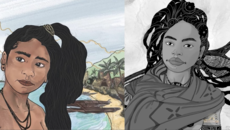
MOANA ARTS PROFILE: ROPATE KAMA
Fijian artist Ropate Kama's work has found traction on instagram with pacific people around the globe. Here he tells the story of what led him create his visions of Fijians, cultural history and the beauty of veiqia tatau. This video is brought to you by Creative New Zealand, as part of the Digital Moana Nui a Kiva Partnership with the New Zealand Ministry of Foreign Affairs and Trade. - #DigitalMoanaArts is a series of Pasifika artists profiles that looks at the exciting work of a multitude of different artists across the Moana. This series of video pieces creates its own digital tapestry of some of the artistic vision, commentary and creative expression in our region.
-
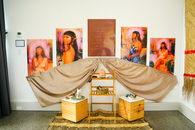
QUEEN FIAPOTO EXHIBITION
The Nix, Grey Lynn is playing host to a collective of Samoan women artists in an exhibition called Queen Fiapoto. They'e only open for a couple more days so you'll need to get down there asap! In the meantime find out more about the exhibition and why you should check it out below ... What is the Queen Fiapoto exhibition and how did it come about? Malae Collective is a collective of multidisciplinary Samoan women artists who are daughters of transitions between Aotearoa and Samoa. Queen Fiapoto is our first exhibition and introduction as Malae Collective. We used this exhibition as an opportunity to masi’i, a gift in the form of a si'i to the art world/space our practises. Our practice and Malae is a va, a blank canvas where we create together to make sense of our worlds. Queen Fiapoto is the travelling vessel that Malae are frequent passengers on, where we gift and invite other passengers to come aboard and let go of romanticised notions of paradise, of diaspora, of ties, of gafa, migration patterns, distance, life cycles and roots. The first spiritual plane Queen Fiapoto travels to is to the simplicity of existence. {{31266}} Who are the artists involved and what are their preferred art mediums? Elena Folau - Photography Lokelani Folau - Multimedia Artist Eseta Le’au - Poet Karita Siakisini - Jewellery maker + Illustrator Lefaataualofa Totua - Multimedia Artist {{31271}} Is there a story behind the name of the exhibition Queen Fiapoto? Queen Fiapoto plays homage to the Queen Poto buses back home in Samoa. From us being frequent passengers of these bright pasi’s, and the stories we share with our mothers and their nostalgic memories of the iconic Queen Poto buses. Queen Fiapoto alludes to the artists in Malae being rightful Fiapotos, in the sense that we can be seen as ‘playing God’ almost by creating these new realms of realities. The magic Queen Fiapoto bus is the metaphoric va where not only Malae artists respond to the transitory nature of our realities, but also inviting and giving bus tickets to those who step into it to do that same. It is our malae, our space in motion. {{31268}} Why do you think it's important to uplift specifically Pacific women in the art space? It is important because we Pacific women are multifaceted. The leaders, the protectors, the nuturers, the carers, the ka’as, the rightful fiapotos. Pacific women stay providing and can continue to give this different lens of realms and knowledge that hold great power. When we uplift Pacific Women, we are uplifting Pacific people. {{31275}} What do you hope people will take away after viewing the exhibition? For us, we hope that the passengers who were there on the opening night, and those who come throughout the week will understand that there is not one Samoan definition of existence. We share this beautiful heritage and collectively share many things in common, but we also have unique insights into how we each identify with what and how existing looks to us. As self-proclaimed shy fiapoto women, creating these works, planning our opening night and sharing it, has in its own way been a healing process. We want this to be felt, as passengers on the Queen Fiapoto. We did what and how, we knew how to plan this exhibiton that reflected heavily in our Samoan values and upbringing. We wanted people to come to our exhibition and feel welcome, catered to, and at home - like it’s just another toona’i with the family. This is what existing is to us. It is the first stop, the first destination of the Queen Fiapoto. Keep a look out for where we travel to next. {{31280}} Exhibition dates and times for the rest of the week/weekend below via the Malae.co instagram page: {{31281}}
-
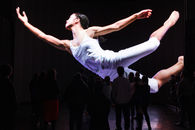
The Art of Black Grace 1/5
“I wanted the audience to experience what it’s like being in the middle of a dance” Black Grace founder and artistic director, Neil Ieremia Enter the new digital universe of The Art of Black Grace – a portable 360 degree, 15 meter diameter by 6 meter high ‘cylindrical structure’ situated in Auckland’s Karanga Plaza, Wynyard Quarter. {{31243}} Designed so the audience feels as if they are within a sensory show, the visuals and sounds are displayed on 288sqm of LED panels. “The mobile LED panel screens give you the feeling that you are completely immersed in the space - it’s like your own stage and you’re part of it, from the breathing to the sweating to the movement and the focus. Dancers come running out and charge at you” Iconic Black Grace dance pieces from the company’s archive have been re created on film and now live another larger than life on these digital screens. {{31246}} The piece is a semi autobiographical journey, with historic nz social history moments including references to Bastion Point, the infamous Spring Bok tour and the Dawn Raids. Developed over the last few years due to the impact of Covid, the work can travel without the dancers in a Covid response - allowing the world to see Black Grace remotely. “There’s something really beautiful about the communal nature of watching something together - that’s the beauty of art, and this lets you feel a part of the actual work. It’s an investment for our future” says Neil Ieremia. {{31248}} “We’ve had some great collaborators - the music for example has come from the Black Grace archive of music made for past dance pieces from artists like Annonymous, Creek Boys Manual Bundy and Submariner - the graphics were made by Ant Sang of Brotown fame.” Neil Ieremia says, “The Art of Black Grace speaks directly to our purpose, to create world-class experiences in Pacific Contemporary Dance; and our vision, to create transformational dance experiences of the highest calibre that represent our unique place in the Pacific. Our ultimate goal is to have multiple displays in different locations across the globe at one time – one has to dream big”. - The work was funded by CNZ’s Covid adaptation fund {{31240}} WHAT: THE ART OF BLACK GRACE 1/5 WHERE: Auckland, Karanga Plaza, Wynyard Quarter WHEN: Sunday, 20 Nov – Saturday 10 Dec Session times every half hour: - Sunday, November 20 - 11am – 5pm Mondays - Tuesdays 6pm - 8.30pm {{31250}} **Tickets $20.00 – booking fee will apply www.ticketmaster.co.nz www.blackgrace.co.nz @blackgracedanceco
-
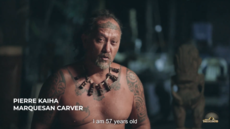
MOANA ARTS PROFILE - PIERRE KAIHA
The world of traditional Marquesan carving is brought to life by master carver Pierre Kaiha who tells us the story of the famous Marquesan Tiki atua that is part of the ancestral heritage of these islands. - #DigitalMoanaArts is a series of Pasifika artists profiles that looks at the exciting work of a multitude of different artists across the Moana. This series of video pieces creates its own digital tapestry of some of the artistic vision, commentary and creative expression in our region.
-
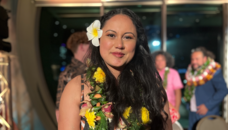
DAHLIA MALAEULU - CREATIVE NZ PASIFIKA ARTS 'EMERGING PACIFIC ARTIST' AWARD WINNER
Dahlia Malae'ulu was one of 8 Pasifika artists to win an award at the 2022 Creative New Zealand Pasifika Arts awards - an Emerging Pacific Artist award for her contribution to Pacific arts in New Zealand. She was also the only female in this years recipients. The Samoan New Zealander is an award-winning author, publisher and creator of Mila’s Books – Pasifika children’s books that help tamaiti to be seen, heard and valued as Pasifika. {{30475}} She is the first Pasifika author to have stories published across all schooling levels and travels around Aotearoa in a variety of reading advocacy roles. - We caught up with Dahlia for a quick Q&A prior to the awards ... Describe your art to us, what’s unique about it to you? I am a Pasifika children's author, publisher and creator of Mila's Books - Pasifika children's books that help our tamaiti to be seen, heard and valued. We are the only all Pasifika publishing team of children's books in the world who have produced Pasifika stories across all schooling levels. Through our Mila's Books stories we have proven what is possible for us as Pasifika writers and independent publishers of our own stories. We have also shown that there is a real hunger and need for stories by us, for all of us. {{30477}} What do you love about doing what you do? I love sharing the power of our stories as Pasifika and being able to hold up a mirror to our tamaiti to show them we are more than enough as Pasifika. Our stories help us to connect, talanoa and heal. This is why our work at Mila's Books will always be more than books for us. - Tell us your next or upcoming project? We are currently juggling a number of book projects which will be released in 2023. One book project is called, Pasifika Navigators, which will be the first Pasifika student poetry collection in the world. We worked with students with a variety of writing abilities across Aotearoa for this particular project and it was a reward in itself to support our tamaiti to discover and develop their storytelling skills, while showing the world that our stories as Pasifika are worthy of being published and celebrated. {{30479}} What inspires you in life and in your art making? From the beginning Mila's Books has always been about our tamaiti, and ensuring that our next generation understand that as Pasifika, we are enough and are more than capable of succeeding as ourselves. My own two sons inspired my author journey and the impact our stories are making on our tamaiti, schools and families continues to inspire me and reinforces the real need for our stories. For instance, we continuously receive feedback about our junior stories helping families and educators learn our languages in a fun, safe and accessible way. {{30481}} I have also had teenagers shed tears in front of me as they shared how our young adult titles have helped them to navigate and articulate how they do not feel accepted as Pasifika here in Aotearoa. There has even been feedback from parents who have told us that our stories have strengthened their relationships with their children and their connection to our culture. School leaders and organisations using our stories tell us about how our stories provide cultural understanding which helps to inform their professional practices to better support our tamaiti. This is the power of our stories and why our tamaiti will always be at the heart of everything we do at Mila's Books. {{30483}}
-
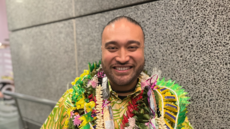
TROY TU'UA - CREATIVE NZ PASIFIKA ARTS 'SPECIAL RECOGNITION' AWARD WINNER
Troy Tu'ua was one of 8 Pasifika artists to win an award at the 2022 Creative New Zealand Pasifika Arts awards - a Special recognition award for his contribution to Pacific arts in New Zealand. Troy is a multi-disciplinary artist and one of the first-ever graduates of the Pacific Institute of Performing Arts. This year he directed the hit theatre show "Dawn Raids" by Oscar Kightley produced by Pacific Underground and Auckland Theatre Company. He is also the artistic director of Pacific theatre dance collective, Sau E Siva Creatives. {{30439}} We caught up with Troy for a quick Q&A prior to the awards ... Describe your art to us, what’s unique about it to you? Honestly, I just run my projects at a professional standard but with family and culture at the forefront. - What do you love about doing what you do? Being able to creative freely, push boundaries and to think outside the box with like minded passionate creatives in a safe space. Accepting all offers brought to the table whether it be trying out a new choreography or an idea for a storyline for a show and I thrive off being challenged creatively. {{30441}} Tell me what your next or upcoming project is? I'm currently writing and Directing a theatre show called "ALATINI" , basically a Poly twist to the well known story of ALADDIN. With a cast of 40 talented Maori/Pasifika artists from our community along with a 6 piece Band "The Backline" to be playing at Q Theatre (Rangatira) next week. {{30443}} What inspires you in life and in your art making? Investing in talents within our community is what makes me happy. Providing a safe space and platform for our people to carry out their passion for the arts as well as learning more about their culture. Identity is something most of our youth struggle with nowadays so having this platform is a way of me and my team SAU E SIVA CREATIVES giving back. {{30444}} 'There is a Samoan proverb "O le tele o sulu e maua ai se figota, e māmā se avega pe a ta among fa'atasi" which translates "My strength does not come from me alone, but from many".
-
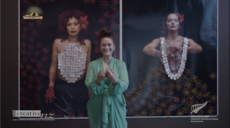
MOANA ARTS PROFILE: SOFIA TEKELA-SMITH
Rotuman artist Sofia Tekela Smith uses her knowledge of traditional craft and Polynesian worldview to create jewellery, print and mixed media photography in her exhibitions. Her upbringing in Rotuma has taught her treasured skills that she applies in a high art context in her works made with mother of pearl, black pearl and pounamu. - #DigitalMoanaArts is a series of Pasifika artists profiles that looks at the exciting work of a multitude of different artists across the Moana. This series of video pieces creates its own digital tapestry of some of the artistic vision, commentary and creative expression in our region.
-
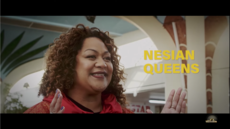
MOANA ARTS PROFILE: DAISY LAVEA-TIMO
Samoan performance poet Daisy Lavea-Timo is a poet, rugby league prop, producer, and the southern regional relationship manager for the Ministry of Youth Development. This is a glimpse into the way she weaves words to reflect her experience as a Pasifika kiwi born Samoan speaking matai in Aotearoa! A Slam Poetry Champion, Daisy uses the the power of words in the age old Pasifika tradition of storytelling. - #DigitalMoanaArts is a series of Pasifika artists profiles that looks at the exciting work of a multitude of different artists across the Moana. This series of video pieces creates its own digital tapestry of some of the artistic vision, commentary and creative expression in our region.
-
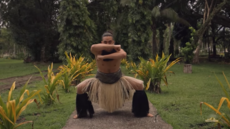
MOANA ARTS PROFILE - IANE TAVO
lane Tavo is Rako Pasefika's new Associate Artistic Director. This new young leadership paved the way for Rako's future. lane is from Else'e, Malha'a and Hapmafau, Itu'ti'u in Rotuma. He began his journey in the Arts as a dancer and has continued to expand his knowledge and skills through other art forms such as music, visual art, film and photography. He has travelled around the world sharing his passion and culture. As a part of Rako Pasefika, he has developed his dance and other art forms into a blend of contemporary and traditional practices. He is a very versatile dancer as he is skilled in a variety ofgenres of dance including traditional, contemporary, basic circus, and fire dance. In 2020, lane was recruited into New Zealand School of Dance after participating in their Tu Move programme. In 2021, he enrolled into the Aboriginal Centre for the Performing Arts where he developed his skills in ballet, contemporary dance, jazz and deepened his understanding of the importance of cultural identity and shaped his vision of his career and life message. He graduated with a Diploma in performing arts majoring in dance and is currently studying at the QUT in Bachelor of Creative Industries majoring in Sound, Music and Dance. lane's vision is to create an awareness amongst Pasifika and indigenous youth about the importance of their heritage, as well as to spread the message of freedom of expression through the arts and creativity. - #DigitalMoanaArts is a series of Pasifika artists profiles that looks at the exciting work of a multitude of different artists across the Moana. This series of video pieces creates its own digital tapestry of some of the artistic vision, commentary and creative expression in our region.
-
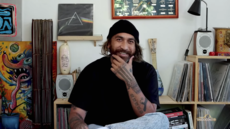
MOANA ARTS PROFILE - AHSIN AHSIN
From giant crocodile murals to animated cutouts and graffiti - step into the world of young Kuki Airani artist Ahsin Ahsin! Influenced by sci-fi films, street art and pop culture of the 80s & 90s, Tāmaki-born Cook Island artist Ahsin Ahsin (Aitu, Aitutaki) has created neo-pop mural sized designs and multi-disciplinary art across Aotearoa. Check out his inspirations and multi disciplinary styles here. “My contribution to Moana Legacy is a mural of my crocodile characters, that I have been creating for a while now. They stemmed from an interest in ancient Greek/Roman vase paintings.” *Source: Tautai Arts Trust - #DigitalMoanaArts is a series of Pasifika artists profiles that looks at the exciting work of a multitude of different artists across the Moana. This series of video pieces creates its own digital tapestry of some of the artistic vision, commentary and creative expression in our region.
-
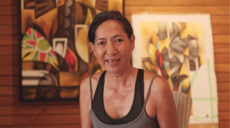
MOANA ARTS PROFILE - MAHIRIKI TANGAROA
Mahiriki's research centres on the Cook Islands God of the Ocean, Tangaroa, the God of Agriculture and War, Rongo, and the unnamed Aitutaki goddess. Her works primarily address social evolution and identity from a modern Pacific perspective. For 20 years, Mahiriki Tangaroa has been a catalyst for Rarotonga’s contemporary art identity, exhibiting regularly and organizing international artist residencies and training workshops for established and aspiring artists and exhibiting both domestically and internationally. Her extensive exhibition history includes shows in Rarotonga, Auckland, Dunedin, Christchurch, Sydney, New York and Stockholm. *Source: Bergman Art Gallery #DigitalMoanaArts is a series of Pasifika artists profiles that looks at the exciting work of a multitude of different artists across the Moana. This series of video pieces creates its own digital tapestry of some of the artistic vision, commentary and creative expression in our region.
-
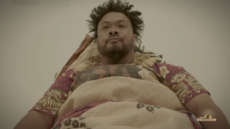
MOANA ARTS PROFILE - KALISOLAITE 'UHILA
Born in Tonga, ‘Uhila’s art practice centres on live performance, in which the expression of his ideas take place, unrehearsed, in gallery spaces and other locations outside of a traditional theatre environment. His path to becoming a performance artist began as a print-maker studying at Auckland University of Technology. Studying a visual arts degree, he realised that he did not need paper to make a print but could bring image and sound together. He started to use his body as a tool and his first performance was using an antique saw to make marks on wood. For his masters he explored the time aspect of ‘social structures and relationships’. His thesis was titled Maumau-taimi: Wasting Time; Being Useless. Exploring perspectives of wasting time versus time well wasted in the field of art together with an ongoing study of the construction of performance to understand the patterns and language hidden inside Body, which he recreates in his own contemporary art of performance art from past and future into the present. *Source: The Arts Foundation Te Tumu Toi #DigitalMoanaArts is a series of Pasifika artists profiles that looks at the exciting work of a multitude of different artists across the Moana. This series of video pieces creates its own digital tapestry of some of the artistic vision, commentary and creative expression in our region.
-
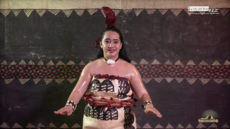
Fakalala Artist Lesieli Tonga Kafa | Creative Native
In a new Pasifika arts series we explore the different art forms of creatives across the Moana who bring joy to the world through their talents. Check out the art of Fakalala making in Tonga, and the making of this beautiful tau'olunga costume by Tongan artist Lesieli Tonga Kafa. Lesieli tells us the history behind this important cultural element and the story of its significance for Tongans worldwide.
-
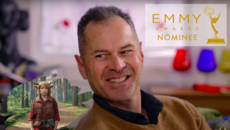
PASIFIKA CREATIVES - TALANOA SERIES: TOA FRASER with ELIZABETH KOROIVULAONO
Award winning writer & filmmaker Toa Fraser - one of the directors of Netflix No1 trending series 'Sweet Tooth' and the groundbreaking Pacific feature No2 talks story with young producer and fellow Fijian Elizabeth Koroivulaono. They kick off our new Pasifika Creatives Talanoa Series showcasing our talented young artists interviewing their artistic icons!
-
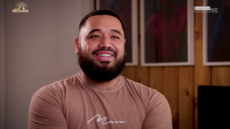
MOANA ARTS PROFILE - PATI SOLOMONA TYRELL
"I don't make art for galleries, I make art for myself. I'm just answering questions for myself that I need to explore, something that's weighing heavy on me. I find it a healing process" - Pati Solomona Tyrell Winner of the 2020 Creative NZ Pasifika Arts 'Emerging Pacific Artist Award Pati Tyrell is a Samoan interdisciplinary artist with a strong focus on performance. Utilizing lens-based media he creates visual outcomes that are cantered around urban Pacific queer identity. He has shown work at Museum of Contemporary Arts Australia, Pingyao International Photography Festival, Centre Pompidou Paris and was a 2018 Walters Prize nominee. Tyrell is a co-founder of the queer Pasifika arts collective FAFSWAG, who in 2020 received an Arts Foundation Laureate. Pati is a pioneering member of the New Zealand ballroom scene, father to the House of Aitu where he continues to build and mobilize his community. He is a graduate of the Bachelor of Creative Arts programme at the Manukau Institute of Technology, Otara. Pati is originally from Kirikiriroa, Waikato but is now based in Maungarei, Tāmaki Makaurau.
-
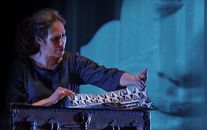
MOANA ARTS PROFILE - NINA NAWALOWALO
"You never know if you're going to win or lose, you never know if you make something it's going to work and only by taking that risk, you try and make something that you think will be of interest to the world ... " - Nina Nawalowalo Winner of the 2017 Creative NZ Arts Pasifika 'Senior Pacific Artist Award' In a career spanning more than 30 years, internationally acclaimed theatre director Nina Nawalowalo has created a platform for the telling of Pacific stories across the globe. Artistic Director and Co-founder of Wellington-based theatre company The Conch, she is a performer, mentor and teacher who has presented at over 40 international festivals, including the London International Mime Festival, British Festival of Visual Theatre, and the Moscow Arts Festival. From her ground breaking Vula, which toured for seven years including a three week season at The Sydney Opera House and a sold out season at London’s Barbican Centre, to Masi and Marama, Nina is renowned for her powerful work exploring Pacific themes. Nina has imbued the same magic through her unforgettable direction of works such as Hone Kouka’s The Prophet and Edinburgh Festival award winning Duck Death and the Tulip. She is passionately committed to bringing untold stories into the light and for using theatre as a vehicle to affect social change. In 2013 she established the Solomon Islands National Women's Theatre Company Stages of Change as a means to address violence against women and girls. The 15 women company performed at the Melanesian Arts Festival in Papua New Guinea and at the EU Parliament in Brussels. Her most recent show, The White Guitar, is the powerful story of The Luafutu Family: Father John and sons Matthias and Malo – aka renowned hip hop artist, Scribe. Told by the Luafutu family, the sold-out show was lauded by critics with praise such as: “If there’s any show that you’re going to see in the next decade, this has to be it” Radio New Zealand “a seminal moment in New Zealand theatre history” The Press.
-
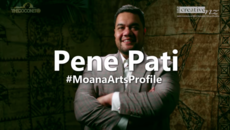
MOANA ARTS PROFILE - PENE PATI
"I'm an incredibly emotional singer and I think that's why opera works so well for me because not only do I get lost in the story of the character but I get lost in the story of my own journey in this whole thing" - Pene Pati Winner of the 2010 Creative NZ Arts Pasifika 'Iosefa Enari Memorial Award' Pene Pati is one third of the smash-hit opera family group Sol3 Mio. Samoan tenor Pene Pati has taken the operatic world by storm with recent debuts as Percy in Donizetti’s Anna Bolena at Opéra national de Bordeaux, Roméo in Gounod’s Roméo et Juliette at San Francisco Opera and Alfredo in Verdi’s La traviata at Moscow’s historic Bolshoi Theatre, and been hailed “the most exceptional tenor discovery of the last decade” (Opéra-Online). While still a young artist on San Francisco Opera’s Adler Program, his critically acclaimed 2017 debut as Il Duca di Mantova in Verdi’s Rigoletto, conducted by Music Director Nicola Luisotti, thrust the New Zealander into the limelight, receiving subsequent invitations to join productions of L’elisir d’amore, Madama Butterfly and Manon. He is currently based back in New Zealand after the Mozart opera Mitridate was cancelled due to Covid-19 on the eve of the opening night at the Berlin State Opera House. He will be one of 4 New Zealand tutors at the 2021 New Zealand Opera School in Whanaganui starting early January.
-
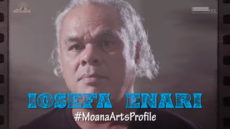
MOANA ARTS PROFILE - IOSEFA ENARI
"If you think about how Aotearoa invaded Samoa over 100 years ago, we were eventually going to come back and fight the colonial power and it's through the arts that's happened" - Iosefa Enari, MNZM Winner of the 2018 Creative Arts NZ Pasifika 'Special Recognition Award' Iosefa Punefu Enari was recognized in the 2020 Queen's Honors list as a Member of the NZ Order of Merit For services to Pacific dance. Iosefa is a dancer, choreographer, artistic director and educator. He is the founder and artistic director of Pacific Dance New Zealand (PDNZ), the national organisation established in 2010 for the development of New Zealand’s Pacific dance industry. He was also a founding member of Pacific Theatre in 1987. He trained as a professional dancer at LIMBS Dance Programme, UNITEC School of Performing Arts and holds a masters degree in Dance Studies from the University of Auckland. Through PDNZ, he has been integral in organising a number of national events including the Pacific Dance Artist in Residence, the Pacific Dance Choreographic Lab, various symposiums, educational and community programmes, and the annual Pacific Dance Festival. As a choreographer he created dance works for the World War One centenary commemoration at Auckland Museum in 2014 and the opening performance for the 2014 televised National Rugby Awards Ceremony. He has created works for art galleries, professional live theatre, television programmes and films. He has performed in the United States, Canada, Japan, Europe and throughout the Pacific.
-
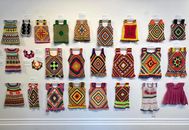
Kolose: The Art of Tuvalu Crochet
When attending a Tuvaluan event, women can often be found working together on their kolose or crochet, reflecting the cultural environment where Pacific people grow up in, with no separation between art, culture and life. {{14227}} Kolose is one of the key art forms practiced by Tuvalu women in Aotearoa New Zealand, as it is back in their homeland. Kolose - the Art of Tuvalu Crochet, which was held at the Mangere Arts Centre in 2014 was the first Tuvalu exhibition in a mainstream art gallery. The concept and practice of exhibitions, however, is not foreign to the Tuvalu community who regularly exhibit and display their works in various cultural contexts. {{14231}} It is an important aspect of Tuvalu culture and Kolose is often worn to church, on special occasions, as part of female dance costumes and as casual wear. They are gifted during special occasions and used to add a unique Tuvaluan décor. This demonstrates the symbiotic relationship between art and culture in Tuvaluan life. {{14235}} Kolose: The Art of Tuvalu Crochet by Fafine Niutao I Aotearoa at Miharo Murihiku in Invercargill. The exhibition opening + interactive community programming was part of Polyfest 2019 by Miharo. This year marked the 10th anniversary for the event, attracting upwards of 30,000 people from the Southland region! Check out some of the exhibition and the opening below. {{14295}}
-
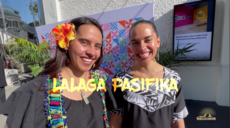
Lalaga Pasifika | Keepin It Fresh
We're keepin it fresh in New Plymouth for the Lalaga Pasifika! A culture-filled gathering where we hear from Pasifika artists and thought-leaders on the future of Pacific arts in Taranaki, learn traditional weaving techniques in our workshops, enjoy dance performances, live tatau demonstrations and much more in this Pasifika-packed occasion. - Keepin It Fresh brings you all the freshness happening in our Moana communities, from Siva Afi Festivals to Pacific Cabarets.
